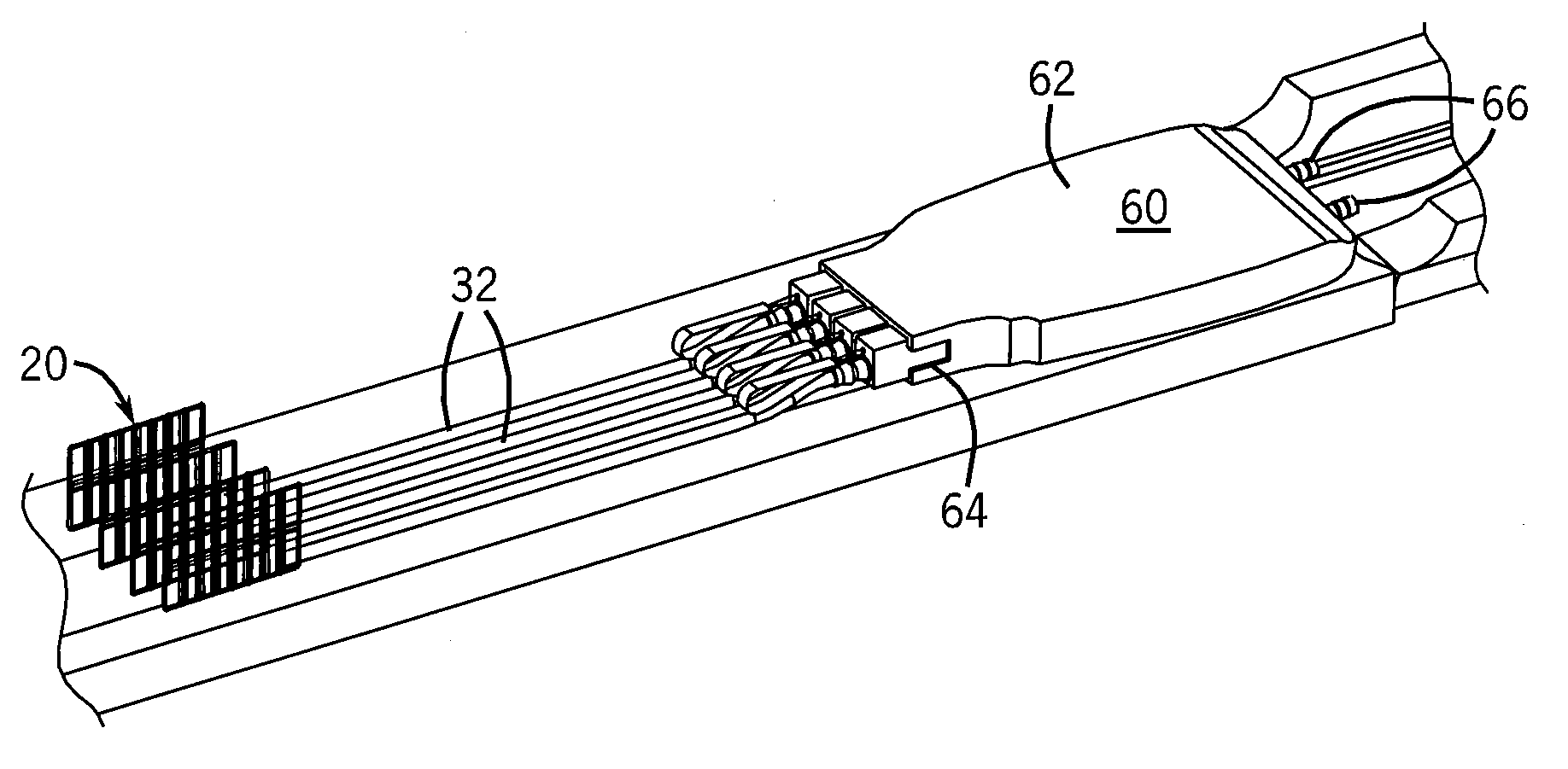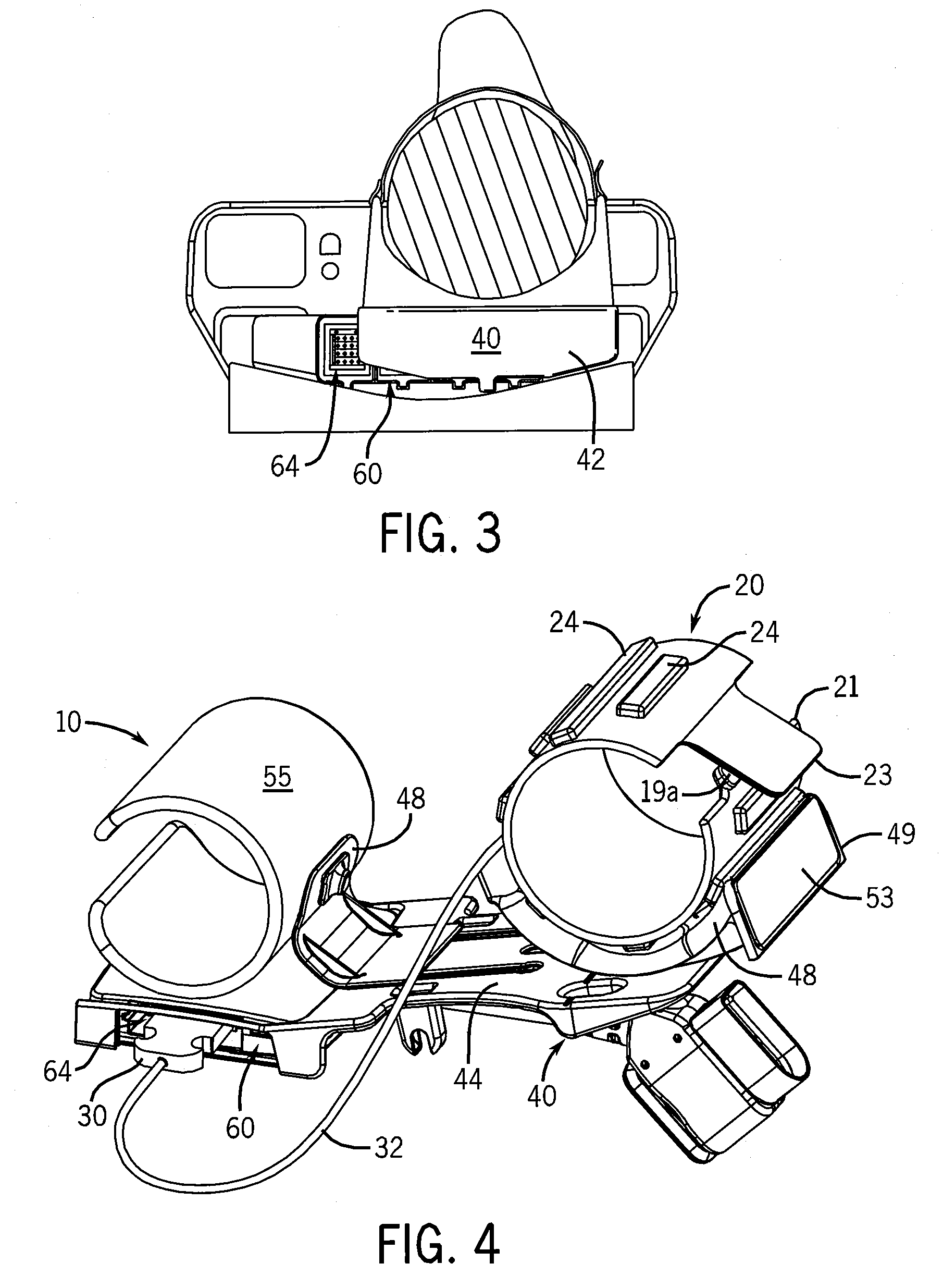Modular Apparatus for Magnetic Resonance Imaging
a module and magnetic resonance imaging technology, applied in the field of magnetic resonance imaging, can solve the problems of affecting the image quality of the imaging center, the cost of rescheduling, so as to reduce the coupling between the overlapping antennae
- Summary
- Abstract
- Description
- Claims
- Application Information
AI Technical Summary
Benefits of technology
Problems solved by technology
Method used
Image
Examples
Embodiment Construction
[0046]The various features and advantageous details of the subject matter disclosed herein are explained more fully with reference to the non-limiting embodiments described in detail in the following description.
[0047]Referring to FIGS. 1-3, a first embodiment of an MM imaging receiver 10 according to the present invention is illustrated. In this embodiment, the imaging receiver 10 is configured to obtain images of a patient's leg and, specifically, the knee. The imaging receiver 10 preferably includes three fundamental components: the antenna arrays 20, the patient stabilization structure 40, and the preamplifier module 60. Each antenna array 20 is a modular structure including multiple antenna loops 22. The antenna arrays 20 preferably include eight, sixteen, or twenty-four individual antenna loops 22 arranged in one or more rows. Each row, for example, may contain eight antenna loops 22. The antenna loops 22 are further arranged such that adjacent loops 22 overlap to reduce mutua...
PUM
 Login to View More
Login to View More Abstract
Description
Claims
Application Information
 Login to View More
Login to View More - R&D
- Intellectual Property
- Life Sciences
- Materials
- Tech Scout
- Unparalleled Data Quality
- Higher Quality Content
- 60% Fewer Hallucinations
Browse by: Latest US Patents, China's latest patents, Technical Efficacy Thesaurus, Application Domain, Technology Topic, Popular Technical Reports.
© 2025 PatSnap. All rights reserved.Legal|Privacy policy|Modern Slavery Act Transparency Statement|Sitemap|About US| Contact US: help@patsnap.com



